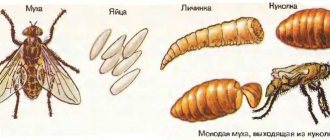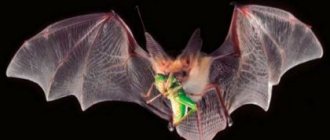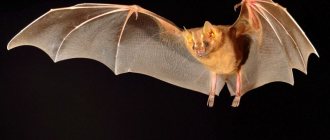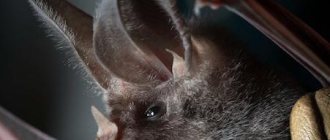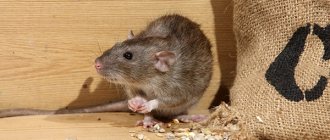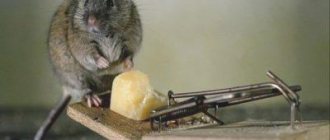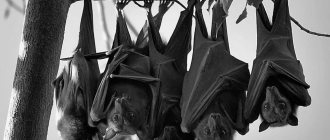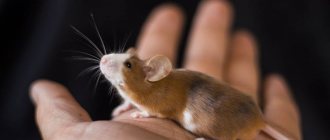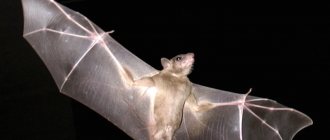Ecosystem protection has become an issue of great importance for human survival in recent years. Scientists from around the world say the extinction of some species of insects and animals, such as bees and bats, could threaten global food production. Much has already been written about the importance of bees in the ecosystem, but only a limited number of people realize that bats also play a significant role in the reproduction of plants and the preservation of the world's ecosystem. We decided to tell you what benefits bats bring to the environment and why it is so important for us to protect this species from extinction.
Like bees, bats also pollinate plants.
Bees, through the pollen they spread among flowers, account for approximately one-third of the world's pollination and contribute to the growth of fruits and seeds that feed humans and many animal species. However, according to 2018 research by Mexico's National Commission for the Protection of Natural Areas (CONANP) and the American Society for Bat Research (NASBR), bats are also specialized pollinators. The fact is that these flying mammals feed on nectar, and thus have direct contact with the reproductive parts of flowers.
Enough for everyone: more than a million places will be available in the country's schools by 2024
You'll have to make 250 flights to fill the Apocalypse Safe on the Moon
Why Viktor Tsoi’s first wife could not forgive him
There are two main types of bats
Bats are divided into microbats (Microchiroptera) and megabats (Megachiroptera). The former can weigh less than a coin, while the latter have a wingspan that can reach 1.5 meters!
Photo: James Wainscoat
Most bats are microbats that eat nocturnal insects such as moths. Vampire bats are the only microbats that feed on blood rather than insects. But don't worry - they prefer to drink the blood of cattle rather than humans.
They actively distribute seeds over vast distances
According to research conducted by a team of scientists from the National Herbarium of Bolivia, some species of bats are large seed dispersers. These animals consume huge amounts of fruit and then disperse the seeds over long distances as they move. During the flight of mice, seeds are distributed, which helps restore certain areas of deforested forests. For this reason, scientists propose using flying mammals to quickly restore forests.
Ultrasonic signals for navigation in space
To navigate dark caves and hunt after dark, microbats rely on echolocation, a system that allows them to detect objects using sound waves. They echolocate by producing a high-pitched sound that travels until it hits an object and is reflected back to them. The echo gives them data about the size of the object and the distance to it.
Unlike microbats, large bats live in the tropics and eat fruit, nectar and pollen. They have large eyes and a strong sense of smell, but their ears are smaller because they do not echolocate.
Bats are capable of controlling insect populations
According to a paper published by researchers from Mexico's National Commission for the Protection of Natural Areas, bats provide significant health and economic benefits because some species feed on harmful insects that can damage large agricultural areas and even carry diseases. Accordingly, the larger the bat population in a given region, the less pesticides can be used, which helps protect the environment.
Archival photos helped to compare how Maslenitsa was celebrated 50 years ago and today
You can make a beautiful stained glass window on your own: step-by-step instructions
Fashionable haircuts for older men: 10 youthful ideas
Unfortunately, many species of these beneficial animals have been harmed by human use of chemicals, causing their populations to plummet. Therefore, scientists from all over the world are sounding the alarm and asking for urgent measures to be taken to ensure the safety of these extremely useful animals.
What to do if a bat flies into your apartment
In summer, during the breeding season, and in autumn, during migration to the south, bats can fly into apartments and houses. Of course, by mistake - either due to lack of orientation in the pursuit of insects, or due to poor flight skills that have not yet been developed in young, inexperienced animals.
They have no claims against you or your premises - and, being disoriented, they will most likely, in search of a way out, simply run around confusedly under the ceiling, hitting the walls, or hang upside down on any suitable object, for example, on a chandelier . What to do in this case?
First of all, do not panic yourself - we repeat, the wild animal is not trying to harm you at all, it is extremely frightened.
Of course, you cannot try to kill an animal - not only is this inhumane, but you may also find yourself subject to administrative liability; many of the bats are listed in the Red Book.
Your task is to rescue the animal from trouble and remove it from the premises. And you need to do this without waving a towel or inciting the house cat to attack the uninvited guest - this will only increase the chaos and risk injury or inflicting it on the animal.
Try simply opening the window wide with all the lights on (mice don’t like bright light) and leaving the room, closing the door behind you. It is quite possible that the animal will calm down and, in the absence of additional irritating factors, will orient itself and fly away on its own.
If it doesn’t work, the best solution would be to try to pick up the mouse (be sure to wear thick gloves, because the animal can bite you in defense!), take it outside and plant it on a tree. It's good if you do this late in the evening. You cannot throw an animal out of a window or from a balcony - it may not have time to orient itself and not open its wings, it will fall to the ground and become easy prey for stray animals or large birds like crows.
If you don’t have thick gloves, you can carefully cover the animal with a box, slip a thick sheet of cardboard or something similar under the box, and again take the bat outside.
If a mouse accidentally flew into your room in late autumn, unfortunately, releasing it outside risks the death of the animal due to the cold and lack of food. Most likely, it did not have time or was unable to fly away for the winter and is now looking for shelter. The best thing in this case is to try to contact specialists from the local department of natural resources, ecological societies, environmental protection, veterinary services, the Ministry of Emergency Situations - they should help. Well, or try to keep the mouse at home until warm days arrive.
They serve as indicators of the "environmental health" of the region in which they live
There is a huge variety of bat species with great adaptability to different habitat conditions. These animals are found in both tropical forests and arid mountains. Such abilities, according to scientists, may force bats to respond to changes in the environment and adjust their habits depending on the level of change that the ecosystem may be subject to.
For example, the method these animals use to build their nests. There is a false belief that all bats live only in caves or tree hollows. Some species of these flying mammals build a tent-like structure out of leaves and branches on trees, which may indicate the level of ecosystem change. That is, they use the resources available to them to build their shelters and thus survive in any habitat. For example, in the absence of trees in deforested areas, they may nest in holes.
Where do bats live and what do they eat?
Despite the fact that in everyday life most people (especially city dwellers) practically do not encounter bats and, as a rule, know almost nothing about them, bats make up approximately a quarter of the world’s mammal fauna and have long lived next to us.
Absolutely all representatives of this suborder Chiroptera, living in the European part of Russia, are completely harmless to humans and feed exclusively on insects, playing an important role in natural ecosystems, hunting in the dark and destroying pests of forests, fields, parks, gardens and vegetable gardens, as well as carriers of pathogens of dangerous diseases. And the animals eat a lot - the metabolism of bats is very intense, often the amount of food eaten per day is approximately half of its own body weight.
Small and medium-sized bats fly at speeds of 10 to 50 km/h while searching for prey.
What bats can you spot in your area? There are several species of them in our latitudes - usually they are small animals of brown, gray, red or brown color with a lighter belly and leathery membraned wings, “stretched” over thin and very long paw bones. They have funny “wrinkled” faces with small eyes and large or very large ears of complex shape.
Vision in bats is poorly developed, but exceptionally fine hearing in the range from 12 to 190,000 Hz is their “pride”. The mice themselves are also quite “talkative” - people with good hearing can easily hear their communication - tinkling and squeaking. In addition, if necessary, bats detect objects blocking their path, emitting abrupt ultrasounds, inaudible to humans, and picking up their echoes reflected from objects (echolocation).
Echolocation allows bats to control their flight altitude, maneuver in dense forests, find their way to shelter, and confidently pursue prey. Moreover, each species of these animals emits a signal on its own wavelength - they differ in the same way as the singing of birds.
By the way, about the songs that we mentioned at the beginning of the article - complex ultrasonic songs have actually been discovered in bats, which are performed for different purposes: when a male is courting a female, to recognize each other, to indicate social status, to determine the boundaries of a territory and to resist strangers, raising young ones.
These songs are reminiscent of birds, and among mammals, bats are the only ones other than humans that use such complex vocal sequences to communicate.
Almost all bats are nocturnal and sleep during the day, hanging upside down, in secure shelters. They do this because, due to the special fragile structure of their bones, the animals are completely defenseless on the ground and cannot move on their paws, pushing off from it. In addition, this position allows them to begin flight directly during the “fall.”
In winter, some bats migrate to warmer regions, while others fall into long-term seasonal hibernation (up to 8 months).
Bats live long enough for such small animals - 15-40 years. They mate in the fall, and in the spring the females give birth to 1-2 cubs.
The only danger to humans that these animals can pose is the transmission of the non-classical rabies virus and the fungus that causes histoplasmosis (a respiratory tract disease). To become infected with rabies, a mouse must bite you hard (which is generally not typical for them; even when sick, they, unlike all other carriers of the virus, do not rush at all living things, but, on the contrary, fall into apathy). To become infected with the fungus, you will have to inhale the crushed excrement of these animals, where the spores live. But let’s say right away that a person is much more likely to get this fungus from birds, both domestic and the ubiquitous wild birds (for example, starlings), in whose droppings it also reproduces well.
Bats produce fertilizer
As we wrote above, mice are specialized plant pollinators and can distribute seeds throughout their habitat. However, in addition to the important function of reforestation, they simultaneously fertilize the soil along their entire flight path. The fact is that the feces of these useful animals contain huge amounts of nitrogen, phosphorus, and other nutrients, which, together with potassium, make up the basic formula of fertilizers.
Found a violation? Report content
Did you know?
- Bats are the only mammals that can fly.
- The smallest bat is the bumblebee mouse from Thailand with a body length of 29–33 mm and a body weight of 2 grams.
- The largest representative of the order is the giant flying fox, which lives on the islands in the South Pacific Ocean. Its body length reaches 40 cm, and its weight is 1.1 kg.
- The Mexican bat is the fastest species of bat, flying at speeds of up to 160 km/h!
- Because bats eat masses of insects whose exoskeletons are made of chitin, their feces glow in the dark.
- Bats can eat up to 1,200 mosquitoes in an hour.
- Up to 70% of the pallid bat's diet consists of scorpions. They are immune to the stings of even the most poisonous scorpion!
- Guano is bat droppings. This is one of the most enriched fertilizers.
The danger of “neighborhood” with a person
Bats are difficult to classify as pests. They feed on insects and live in hard-to-reach places. Flyers have virtually no contact with humans, but at the same time bring significant benefits. By destroying insects, they protect crops from attack by pests. And by eating midges and mosquitoes, they protect people from unpleasant and painful bites.
But if these valuable “helpers” settle next to the apartment, they can seriously disturb not only the peace, but also cause significant harm.
- Lack of silence. Night “guests” make a rather unpleasant squeak. The flapping of the wings is accompanied by characteristic claps. All these rustling noises occur at night, so you will have to forget about a restful sleep for a while.
- Chance of being bitten. Bats practically do not bite. But if you disturb the colony, irritate the animal, or unsuccessfully catch an individual that accidentally flew into your house, you may feel a very dangerous bite on yourself. Mice do not bite painfully because their saliva contains an analgesic component. However, the bite can lead to serious problems.
- Spread of infection. Bats can become carriers of many diseases dangerous to humans. They themselves do not suffer from these infections, since they are able to increase their body temperature, thereby activating the immune system. Doctors warn that uninvited “neighbors” can infect a person with Ebola fever, SARS, Marburg virus, hemorrhagic fever, rabies and other pathologies.
- Litter. Bat feces are contaminated with histoplasmosis. The droppings emit vapors that penetrate the human body. The fungus can lead to the development of serious pathologies of the respiratory system.
Dangerous body features of bats for humans
Outwardly, these animals are not very cute. Their body is covered with thick, hard hair, and on their muzzle there are specific outgrowths adapted to improve echolocation. You can also see quite large ears on the animal’s head. In some species, the size of the auricle reaches half the total length of the body and tail. These are the largest ears in relation to body size among mammals. The animals fly thanks to modified forelimbs, namely the skin membrane between the second and fifth fingers. Some species also have a rear membrane connecting the tail and hind limbs. With the help of its tenacious claws, the bat can cling to even the smallest irregularities. The animal's teeth are small and very sharp. A person may not even feel a bat bite. Blood-sucking species can bite the victim even in sleep.
Blood-sucking bat Desmodus rotundus
Store methods of control
Bat repellents There are also store-bought products that help get rid of bats:
- Special repellent aerosols are sold in hardware stores or at the market, but experts question their effectiveness. Sprays containing toxic substances are not recommended for use due to the possible death of animals.
- Ultrasonic repeller - installed indoors on the site, scaring away mice with sound at a frequency of 35-60 kHz. The effectiveness of such devices depends on the correct location and sufficient radius of influence.
- Bat Magic repellent, produced by Bonide, contains peppermint oil, which, according to the instructions, should be sprayed in the habitats of chiropterans to repel them.
If the above methods do not help get rid of bats at your dacha or in your house, then if you have the financial means, you can contact special companies that provide services for catching and getting rid of bats or environmental services that may agree to relocate bats from your home to more suitable ones. their places.
Interesting!
Scientific research into the body of these animals and their location abilities helped create navigation instruments and devices for orienting the blind.
Dream
Representatives of bats sleep upside down . With the claws of their hind legs, they cling to a horizontal crossbar or a tree branch, press their wings to their body and fall asleep. Why do bats sleep upside down (upside down)? They do not sleep while sitting: the weak bones of the lower extremities cannot withstand hours of stress on them during sleep.
Sleeping bats, sensing danger, spread their wings, unclench the claws of their hind legs and fly away without wasting time getting up from a lying or sitting position.
Types of bats: names and photos
Below are descriptions of some varieties of bats.
Pig Nose
The body length of adult individuals is only 3-4 cm. They are found in the southeastern regions of Asia. The front part of the muzzle is flattened and looks like a pig's snout.
Fruity
The second name of the animal is the epaulette fruit bat. Fruit mice live in Africa. They play a large role in the ecosystem of the continent, carrying the seeds of the fruits they eat over considerable distances. This species is known to transmit the Ebola virus.
Water bat
Belongs to the family of smooth-nosed mice. There are no cartilaginous growths on the animal's face. In winter, it goes into suspended animation. Lives in the temperate climate zone. You can distinguish it from its relatives by the reddish tint of its muzzle.
Two-tone leather
vespertilio murinus
Small bats whose range extends over a large area of Europe and Asia.
Brown long-eared bat
You can identify the animal by its very large ears: their length is equal to the length of the forearms. Before going to bed, the long-eared long-eared bat folds its ears on its back and covers them with its wings.
The sizes and weights of some representatives of the order are given below.
| Type name | Body length, cm | Weight, g |
| Maned Acerodon | 29 | 1200 |
| Spectacled flying fox | 24 | 800 |
| Egyptian flying dog | 17 | 400 |
| Great harelip | 13 | 80 |
| Great Spearman | 10 | 80 |
| Wide-eared folded lip | 9 | 50 |
| White leaf-nosed bat | 4 | 7 |
Horseshoe
Dimensions and weight
The length of the tiny body of the animals inhabiting Russia usually does not exceed 5 cm , the wingspan of the smallest of them is 18 cm. The weight of the record-breaking little ones is 2-5 g.
Long-eared mice, white mice and pig-nosed mice are small in size. A representative of the latter species is considered one of the smallest mammals on Earth.
Large individuals weigh up to a kilogram. The distance between the tips of the toes of the front paws with the wings spread can reach one and a half meters, and the body length can be 40 cm. Fruit bats, South American false vampires, are considered real giants among bats.
How do mice see in the dark?
How do bats navigate in the dark? What sounds do bats make? The amazing ability of bats to fly and get food without vision was revealed after using sensitive sensors it was possible to record the ultrasonic signals that the animals emit during flight.
The ultrasound of bats, which is inaudible to the human ear, is reflected from surrounding objects within a radius of 15 meters, returns to the animal, is collected by the pinna and analyzed by the inner ear. Animals have delicate hearing .
This phenomenon is called "echolocation" . By the way, the echolocation of bats was borrowed by people to scan the seabed. In addition to bats, dolphins also use .
Enemies in nature
Bats also have their own enemies, who in turn can hunt them. Usually these are birds of prey: peregrine falcons, hobby birds,
hawks, and also owls. A snake, marten and weasel will not mind grabbing a bat.
But the main enemy of bats (as well as many other animals) is, of course, humans. The use of chemicals in crop production has significantly reduced the number of bats; many of the species are already listed in the Red Book, as they are on the verge of extinction.
